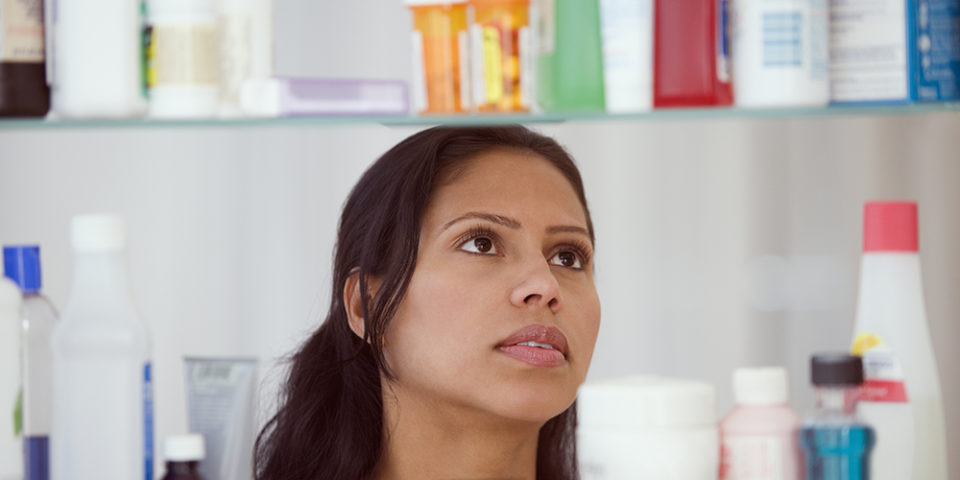How to safely organize your medicine cabinet
Whether it’s part of spring cleaning or out of a simple year-round desire to keep your stash of medicines up-to-date and safely stored, taking some time to safely organize your medicine cabinet could prevent unintentional mishaps or even injuries.
“Home medicine cabinet mishaps currently account for 1.3 million visits to the emergency room every year,” said pharmacist Jessica Sterchi, PharmD. She offered advice on safe medication storage and decluttering your at-home drugstore.
As always, education is key
The EPA maintains a guide to safely storing medication in order to minimize the risk of unwanted access to medicines, but there’s more to it than just making sure your medications don’t fall into the wrong hands.
“It’s not just about accidental ingestion,” said Sterchi. “You’ll also want to pay close attention to expiration dates, as medications may lose effectiveness over time or even become potentially harmful.”
- Throw away any item that is beyond the expiration date or has an expiration date that is no longer readable.
- For prescription medication, discard any prescription medications that are older than one year.
- Make sure you check over-the-counter medications, as well as vitamins and supplements. Discard when the expiration date has passed.
- Ditch any items that have changed color, smell or taste. This includes any colors that have faded, because they may have been exposed to too much light.
- Keep medications in their original containers. This makes them easily recognizable and provides safety as many have tamper-proof tops. This includes ointments, since these can easily be mistaken for daily hygiene items. If it is no longer in its original container, get rid of it.
- Consider relocating your medicine. Medications should be kept in a cool, dry place, away from children. Consider a drawer in your dresser or a lock box rather than the bathroom, which can be humid or too easy for the wrong hands to reach.
- Prevent drug abuse through secure storage. Many teens admit that they take prescription medications from their parents or their friends’ parents’ medicine cabinets.
When to do (and what NOT to do) when disposing of medications
“First and foremost, do not flush expired or unwanted prescriptions or over-the-counter medication down the toilet or wash them down the drain unless the label or the patient information you received specifically says to do so,” said Sterchi.
The EPA maintains a list of options for drug take-backs, which could include DEA programs on National Take Back Day, kiosks at local pharmacies or law enforcement agency locations, using mail-back envelopes and more.
If your only options is at-home disposal, follow these steps:
- Remove prescriptions drugs from their original containers.
- Put the mixture into a disposable container with a lid. An empty margarine or butter tub or sealable bag both make for good options.
- Mix the medication like an undesirable substance like cat litter or used coffee grounds.
- Remove or cover up any identifying information on the medication containers. Covering it with a permanent marker or duct tape or scratching it off may work.
- Place the sealed container with the drug mixture and empty drug containers into the trash.
- Dispose of trash as normal.
“These extra steps don’t take long at all, but they can make your home a much more organized and safer place,” said Sterchi. “It’s worth the few minutes it takes to ensure that your medicine cabinet is up-to-date and all those medicines are safely stored.”
Find a doctor
Whether you’re looking for a primary care physician or need to see a specialist, we’re here to help with experienced, compassionate care near you.
Find a Doctor

